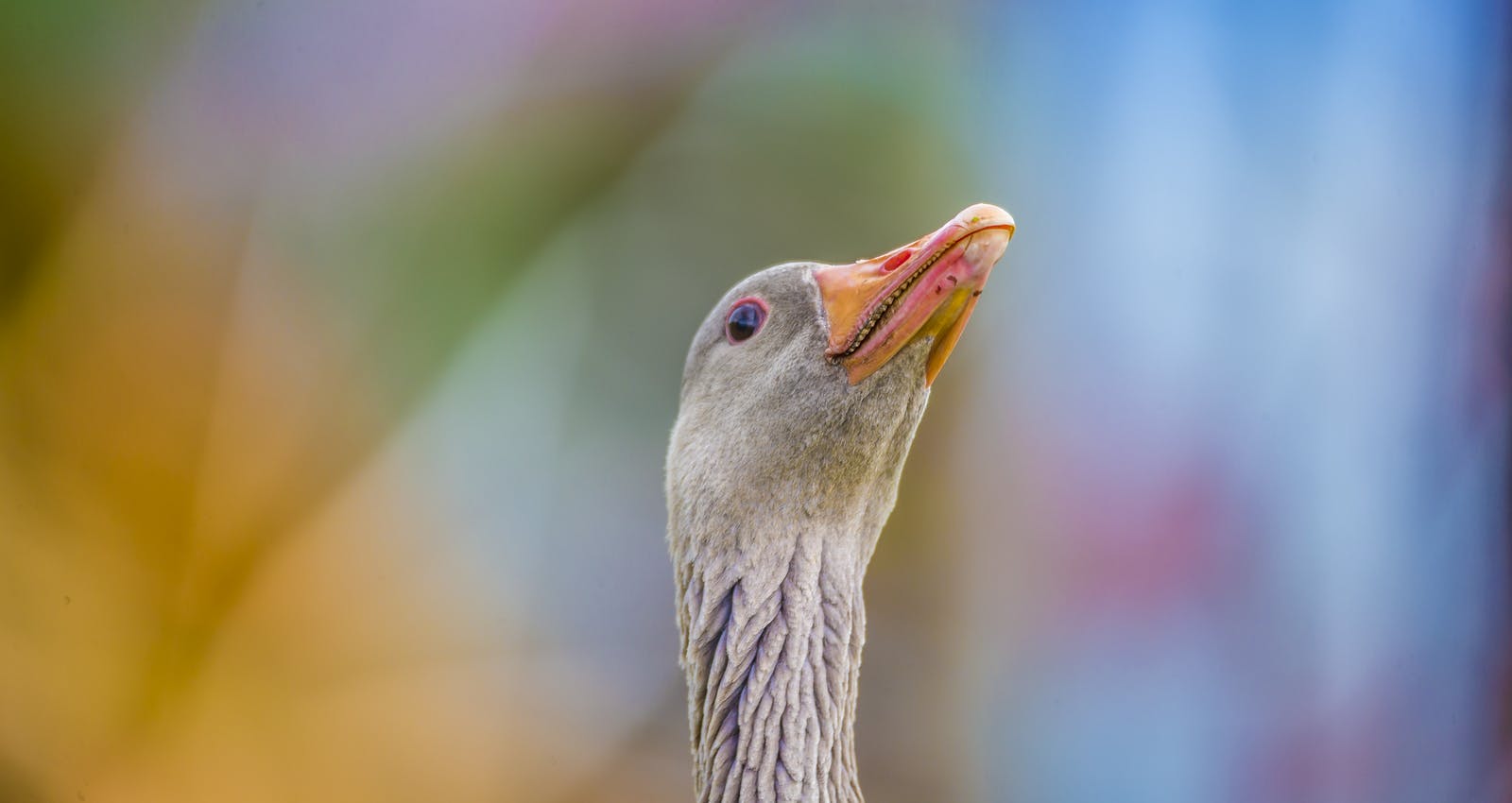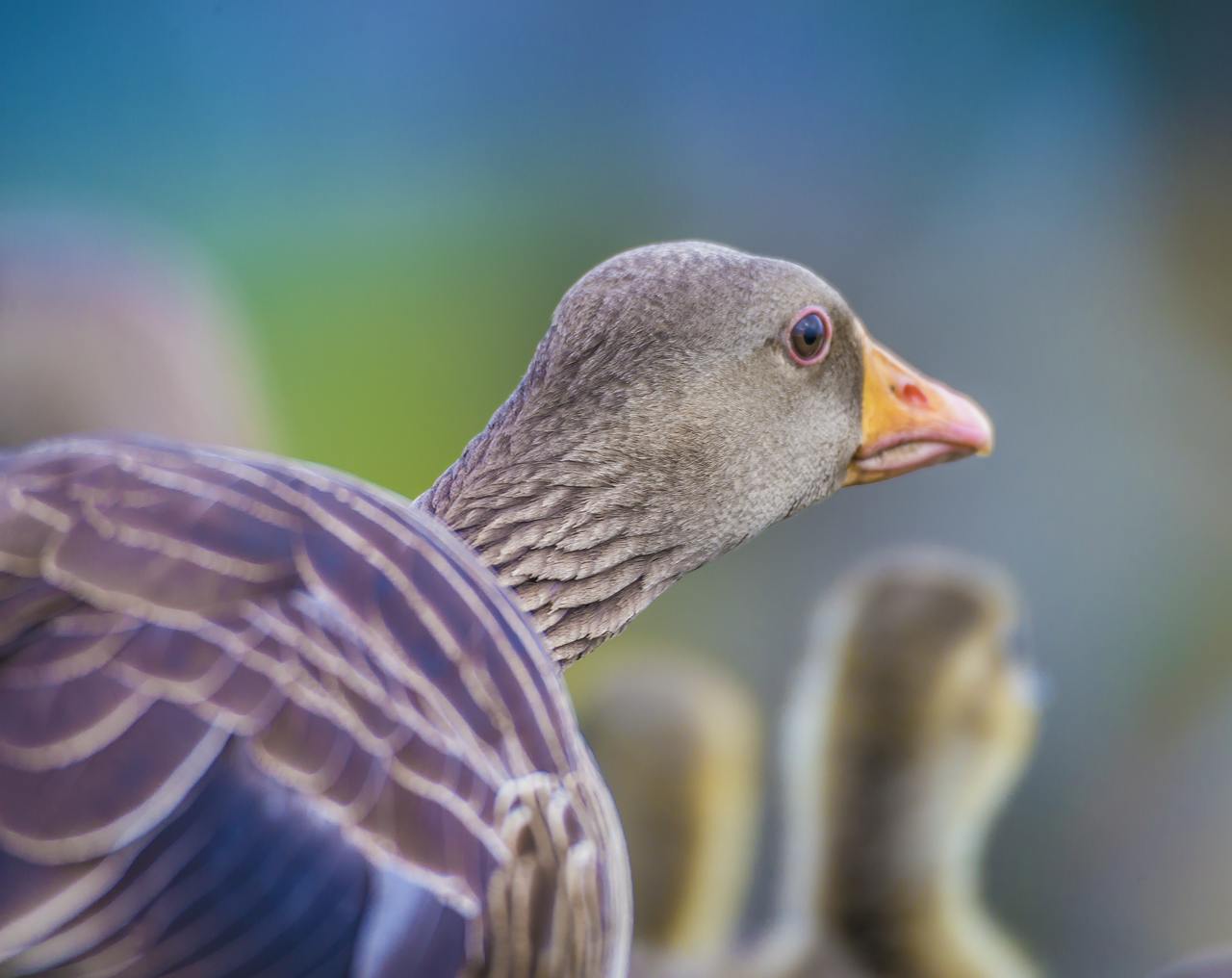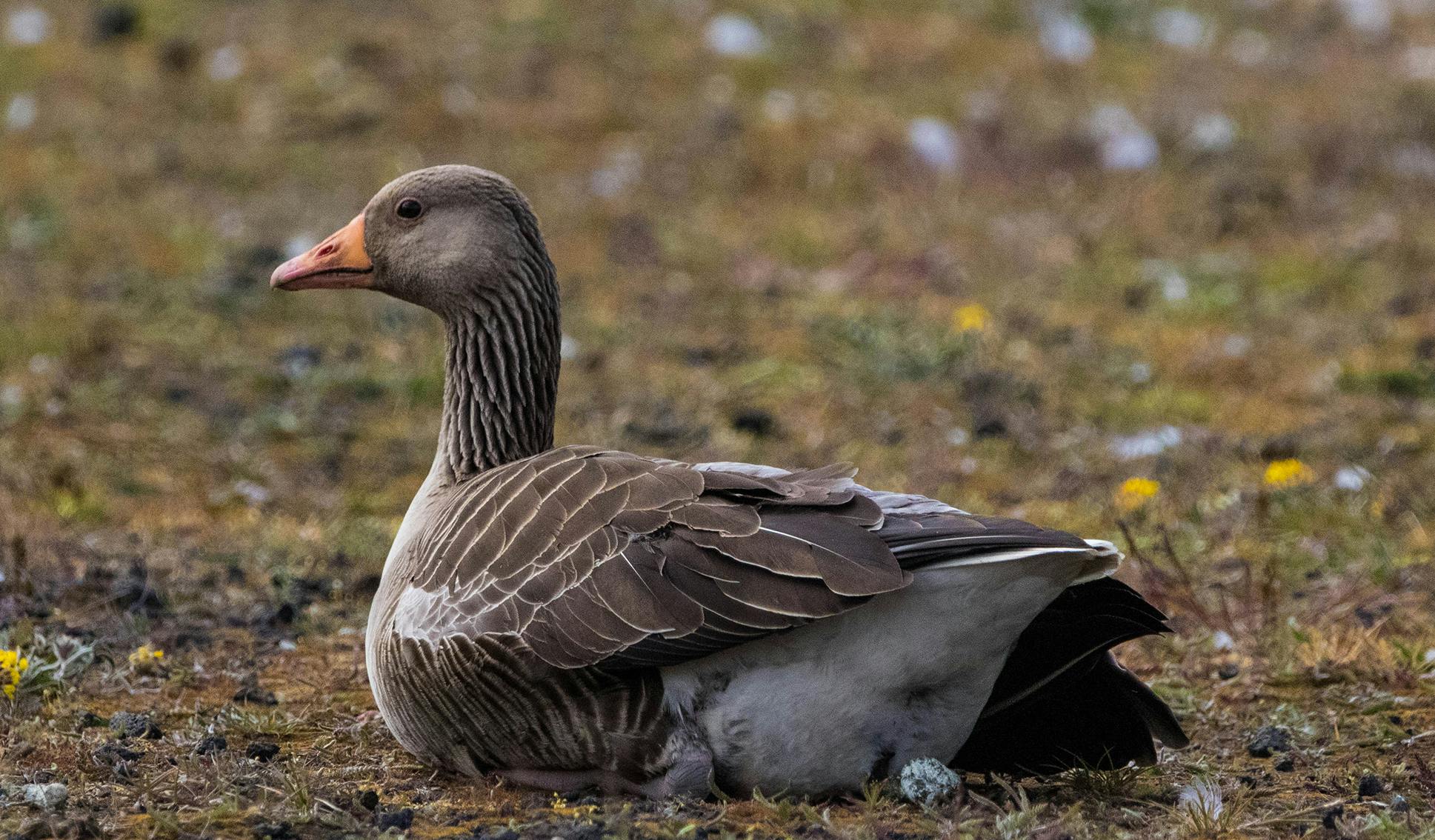
Spot the Greylag Goose: The Biggest Grey Goose of the World
Characteristics of the Greylag Goose
The greylag goose (Anser anser) belongs to the waterfowl family (Anatidae) along with ducks and swans but is a member of the grey goose genus (Anser) along with 11 other species. The greylag goose is the largest species within the genus and is the largest goose in Iceland. An adult weighs about 2.7 - 3.6 kgs (6-8 lbs), and the bird's length is 71-91 centimetres (28-36 in). Males are bigger than females, but both sexes look alike.
As the name indicates, the greylag goose has a very definite greyish look. The head, back and wings are grey, and the belly is white with black spots on adults. The bill is pale pink or orange with a lighter-coloured nail at the tip. Feet are light pink with webbed toes for swimming. Juvenile birds look similar to adults but have lighter colours and a dark nail on the bill. Wings are large and strong with a 50-180 cm (59-71 in) wingspan. A pale grey forewing and white rump are noticeable during flight.
Unveiling the Wonders of Icelandic Nature and Wildlife
Discover the magical mysteries of Icelandic nature and wildlife at the Perlan Museum in Reykjavík. Inside, explore a treasure trove of fun activities that let you dive deep into all the amazing things Iceland has to offer. This special experience is made for all ages, bringing Iceland's incredible beauty and nature together in one fantastic place at the Perlan Museum. Read more about the exhibitions at Perlan here.
Greylag Geese Are Found All Around Iceland
The greylag goose is mostly a migratory bird in Iceland and arrives in great numbers early in spring. At the beginning of March, the first birds appear in the southern part of the country. They start feeding and building the energy reserves needed for the upcoming nesting season. The male, often called “Gassi” in Icelandic, stands guard and protects his female, giving her time to feed and accumulate energy reserves for incubation. When the female is incubating, the male becomes quite aggressive towards intruders. He hisses, bites and flaps his wings when unwanted visitors come to close.
The Icelandic greylag goose population has increased in recent decades because of a more stable food supply as grain production in Iceland and winter grain production in Great Britain has increased. Minimum population size is estimated to be 35-40 thousand breeding pairs or about 100 thousand birds in autumn. The greylag goose is distributed all around Iceland and nests both on the mainland and on islands. A considerable number of goose nests are found along the banks of the biggest rivers, but the greylag goose seldom exceeds 300m in height.
The Goslings Are Very Tame and Follow Strangers

The greylag goose nests early, and the first nests are found in late April, but most of the birds lay eggs in May. The clutch contains 3-6 white eggs, weighing about 165 g each, corresponding to three normal chicken eggs in size. The nest is well insulated with goose down and dry hay, often hidden in dense cover close to water or the shoreline.
The female incubates, but the male stands guard. Like other waterfowls, the goose has a very high incubation consistency, only leaving the nest to drink and preen. The female loses a lot of energy during the 27-28 incubation days. It is important for her survival that she has enough energy reserves when starting egg laying. Goslings leave the nest about 24 hours after hatching. They follow their parents to feeding grounds, and the family stays together until they leave the country in late autumn.
The Greylag Goslings
The diet of goslings is mostly the same as adults: herbs and berries. The goslings are yellow/greenish-coloured, but start getting the characteristic grey early. Goslings are very tame. They follow people, vehicles and other bird species, a behaviour that has gotten many of them into trouble.
“Goose-Slaughtering Sites”: an Old Tradition
The greylag goose moults its wing feathers mid-summer, as do other waterfowls, and is, therefore, unable to fly until the middle of August. During this moulting period, the geese form large flocks on rivers, lakes and at sea, which protects them against predators. Back in the day, moulting geese were herded in large groups and slaughtered.
Remains of these goose-slaughtering sites can still be found around Iceland. Goose slaughtering has long been forbidden, and today, geese are protected by law during nest- and moulting season. The hunting period for greylag geese, which is one of the most popular hunting species of Icelanders, is from August 20th to March 15th. About 30-45 thousand greylag geese are hunted in Iceland each year.
Do Greylag Geese Truly Migrate to Great Britain in the Fall?

In late autumn, the greylag geese form large flocks of hundreds of birds and leave the country. Icelandic geese migrate to Great Britain. Most of the population stays in Scotland during the winter, but tracking of marked birds has shown that a part of the population stays in Norway and the Netherlands. However, some greylag geese do not migrate from Iceland but stay during the long winter. About one thousand birds stay in the Reykjavík area and depend on locals' feeding. Even a bigger number of geese stay in potato- and barley fields in southern Iceland during the harsh winter months.
Greylag Geese and their Relationships
Greylag goose pair bonds in a monogamous relationship that lasts a lifetime. If the mate dies, which often happens, it quickly finds a replacement bird to pair with. The lifespan of a wild greylag goose is about eight years, but it is known that it can be over 20 years old. The greylag goose is a social bird and is rarely seen alone.
A strong hierarchy is within the group, and birds fight for the dominant status. Usually, the most experienced bird is the highest ranked. The greylag geese “talk” a lot, so loud honking and babbling is very characteristic of the species. Honking alarms sounds like an amateur trumpet player, but the goose has many other complex calls worth listening to.
Five Must Know Facts About the Greylag Goose

- Geese must eat sand and drink water in order to digest their food. That is the reason why they are overnight close to both.
- When new flight feathers grow during the moulting period, they are very fragile and bloody. Wings often bleed during the moulting stage, and Icelanders say that the bird is „being hurt“.
- Goslings are sometimes called „gögl“ in Icelandic.
- Geese travel mostly during twilight hours, and geese flocks' V-shaped flight pattern is well known. The birds take turns being the flight leader as it minimises air pressure for the birds flying behind, saving the flock energy in long flights.
- The greylag goose is the ancestor of most domesticated goose species today. The first documents of domesticated geese are over 3000 years old!
Popular articles

Reykjanes Volcanoes Overview
Enjoy a complete overview of the Reykjanes Volcanoes from 2021-2024. Learn about its geology, recent activity, and visitor tips for a safe, memorable experience.

Reykjanes Peninsula Volcanoes: Sundhnúksgígar Eruptions
The anticipated volcano has erupted in the Reykjanes Peninsula, the site is being called Sundhnúkagígar. See the historic insights on the seismic activity and volcanic eruptions.

Earthquakes in Iceland
Earthquakes in Iceland are a fact of life. Each year, hundreds of small tremors shake the earth, a reminder of the country’s position on a tectonic plate boundary.

Volcano Museums and Exhibitions in Iceland
If you don't manage to visit an actively erupting volcano in Iceland - Experience its force at one of these excellent volcano museums and exhibitions in Iceland.

Top 10 Places To See the Northern Lights in Iceland
You can see the northern lights across the country, but some spots are more suitable than others. Find the best place to see the northern lights in Iceland.

Ice Caves From Reykjavik
Travel beyond the capital for a closer look at an ice cave under one of Iceland’s glaciers. If you can’t spare the time, experience Perlan’s ice cave in Reykjavik.